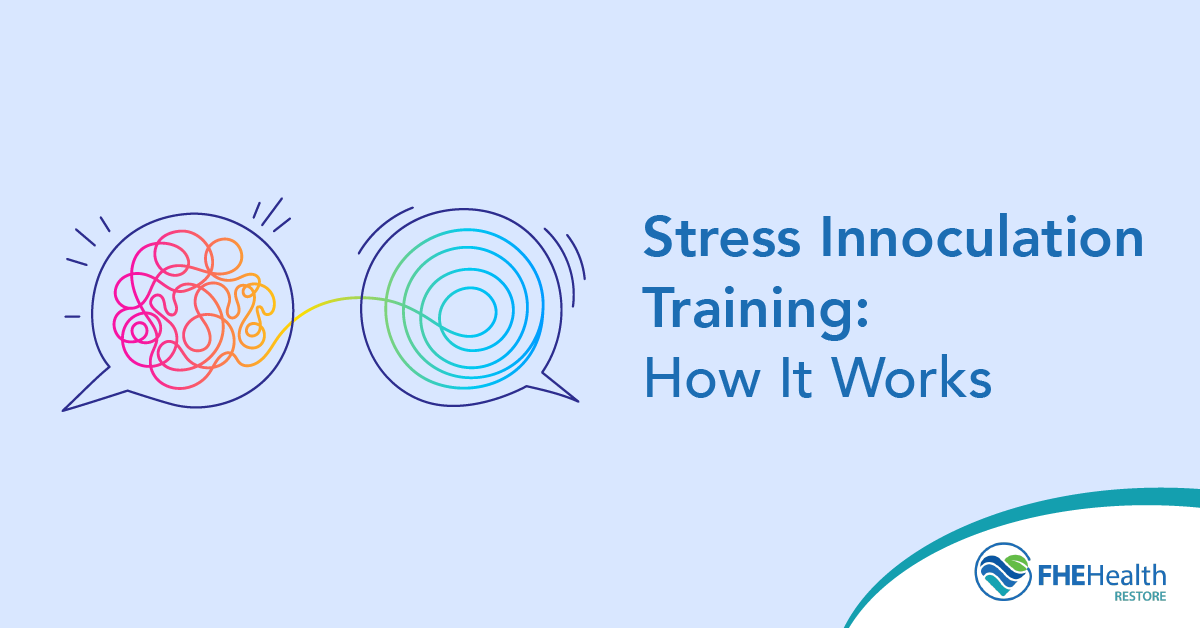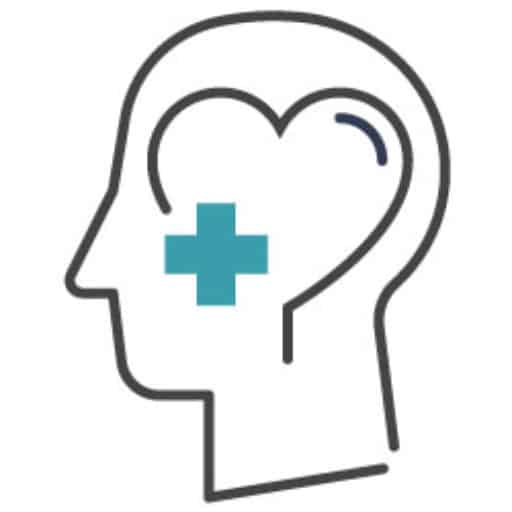Stress inoculation training helps individuals manage stress through coping mechanisms. Learn more about how SIT works and whether it’s right for you.
Everyone experiences stress. It’s a normal response to things such as work deadlines, school assignments and the general chaos of day-to-day life. However, if you find yourself consistently overwhelmed by stress, you may want to rethink how you’re coping. That’s where stress inoculation training comes in.
Put simply, SIT is a form of cognitive behavioral therapy focused specifically on managing stress. Through coping mechanisms and strategies, individuals learn to better handle stress and improve mental wellness. Let’s take a closer look at how SIT works and whether it’s right for you.
What Is Stress Inoculation Therapy, and How Does It Work?
SIT was originally developed in the 1980s by psychologist Donald Meichenbaum, who followed the concept of exposure therapy. Commonly used for conditions such as social anxiety and post-traumatic stress disorder, exposure therapy encourages patients to carefully confront the source of their distress. For example, it treats social anxiety by placing patients in social situations they might otherwise avoid.
Similarly, stress inoculation therapy helps individuals deal with negative emotions by gently exposing them to stressful situations. The goal isn’t to eliminate stress entirely; rather, it focuses on strengthening the individual’s ability to manage it.
Why Is Stress Inoculation Important?
Before we unpack how SIT therapy works, it’s helpful to understand why this treatment is important. According to a study by the American Institute of Stress, 43% of adults felt more stressed in 2024 than in the previous year. When left unaddressed, stress can lead to:
- Poor mental health. High stress levels increase the risk of developing mental health conditions, including anxiety and depression.
- Physical health problems. In addition to impacting mental health, stress can manifest in physical symptoms. Many people report experiencing chest pain, headaches, fatigue and digestive issues.
- Poor sleep. Chronic stress makes it more difficult to fall and stay asleep. If left untreated, poor sleep can worsen physical problems and disrupt cognitive abilities.
To cope with stress, many people turn to unhealthy habits or behaviors. These include increased substance use, poor dietary habits, social isolation and temper tantrums. While these behaviors can help people feel better in the moment, they generally cause more damage in the long run. That’s why it’s important to replace these coping mechanisms with healthier ones.
How Does SIT Therapy Work?
If you frequently feel stressed and don’t know how to handle it, stress inoculation therapy can help. SIT is structured around three key phases, each building on the last:
- Conceptualization. During the first phase, you and your therapist work together to identify your major stressors and understand how you currently respond to stress. For some, this response might involve drinking or substance use; for others, it might be related to sleep problems or eating junk food. Through conceptualization, you can better understand the link between your feelings and your actions.
- Skills acquisition and rehearsal. Once you’ve developed a better idea of your stress response, the next step is to build coping skills and replace unhealthy behaviors with positive ones. For example, you may replace negative thought patterns with problem-solving techniques or harmful habits with breathing exercises. The goal is to reframe stress as something that can be managed.
- Application and follow-through. The final phase involves gradually applying your new skills to real-world scenarios and role-play exercises. By practicing your new coping mechanisms, you can build stress resilience and better prepare yourself for future stressful situations.
When combined, these phases help you recognize your own struggles with stress and find better ways to cope. SIT therapy is an ongoing process that usually requires multiple sessions. Just like any skill, it takes practice.
What Conditions Can SIT Help With?
While SIT can support anyone with chronic stress, it’s often used to help treat specific conditions. These include:
- Post-traumatic stress disorder. PTSD is typically linked to past trauma (such as a car accident or combat), and PTSD patients often experience severe anxiety, uncontrollable thoughts and flashbacks. The U.S. Department of Veteran Affairs recommends SIT for PTSD symptoms, citing its positive effects on stress management.
- Generalized anxiety disorder. People with GAD experience chronic, excessive worry about everyday issues, including work, school and relationship problems. SIT helps break this cycle of worry through cognitive restructuring, teaching individuals how to identify anxious thought patterns and replace them with more balanced, constructive thinking.
- Performance anxiety. One of the most common causes of stress is performance anxiety, or stage fright. Contrary to popular belief, performance anxiety isn’t just about performing on a public stage; it can manifest during any daunting task, such as taking a test or playing a competitive sport. SIT uses techniques such as deep breathing and positive thinking to help individuals perform better under pressure.
- Workplace burnout. Over time, chronic stress can lead to a phenomenon called burnout. Characterized by an empty, powerless feeling, burnout may cause depression, anxiety and general hopelessness. Although it’s commonly associated with work, burnout can occur due to any stressful, long-term task (such as caregiving or chronic illness). SIT teaches individuals how to identify early signs of burnout and implement strategies to stop the cycle.
- Anger management. As mentioned earlier, some people respond to stress with angry outbursts. Not only are outbursts bad for the individual’s own mental health, they can also harm their relationships. SIT helps people recognize early, small signs of anger (such as muscle tension), allowing for swift intervention. Through role-play exercises and reframed thinking, individuals can learn how to channel their anger into calmer, more productive emotions.
Depending on the exact condition, it may be necessary to combine SIT with other treatments or therapies. Always consult a medical professional before beginning a new treatment.
Overcoming Stress and Achieving a Healthier, Happier Lifestyle
Whether you’re struggling to manage a condition such as PTSD or just feel overwhelmed by your day-to-day life, it’s important to find proper coping mechanisms to deal with stress. When ignored, stress can negatively impact your physical and mental health, leading to problems such as anxiety, headaches and insomnia.
Contact Us
At Restore Mental Health, we focus on improving mental wellness through holistic, personalized treatment plans. We offer inpatient and outpatient care, as well as programs designed for specific conditions. Contact us today to learn more about our treatments and how we can help you.



